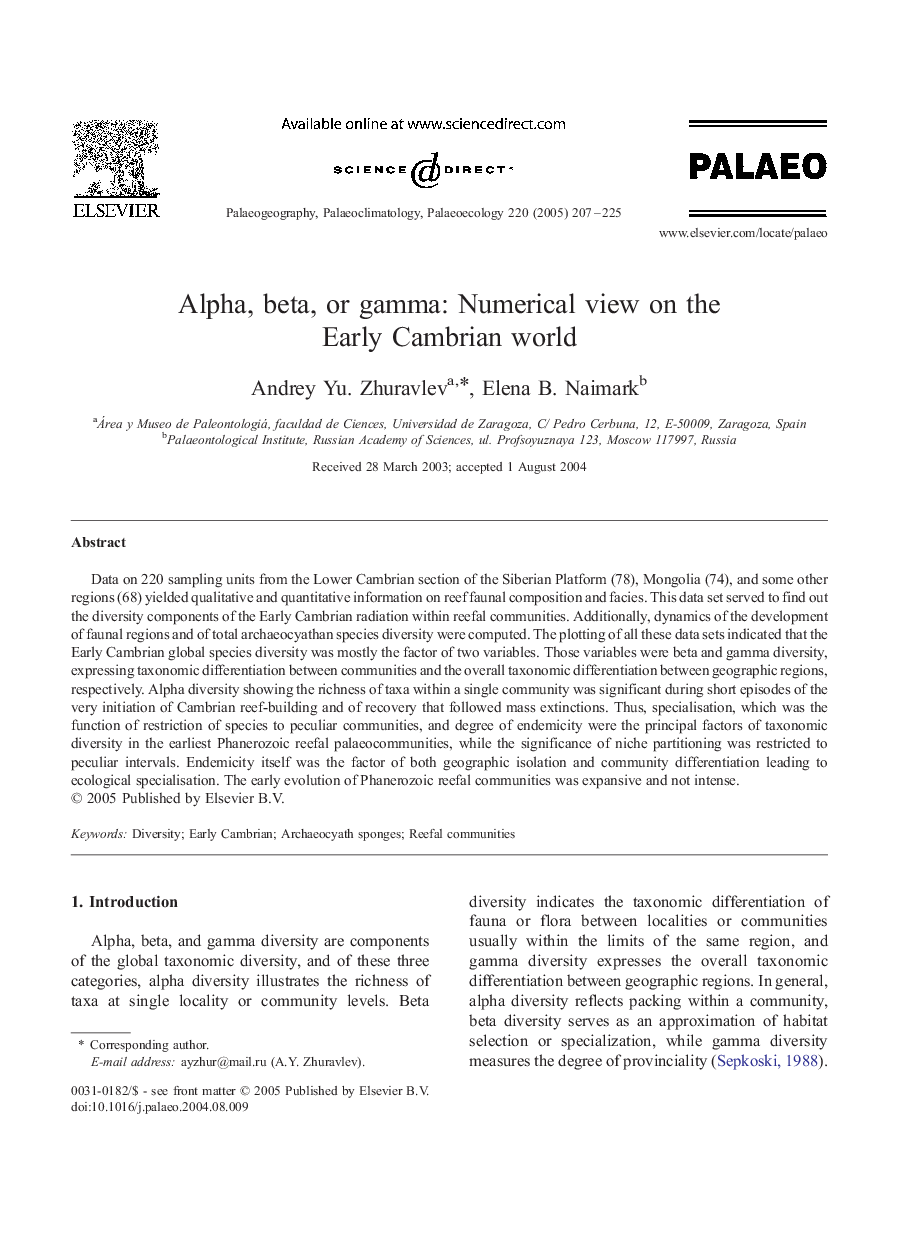| Article ID | Journal | Published Year | Pages | File Type |
|---|---|---|---|---|
| 9463223 | Palaeogeography, Palaeoclimatology, Palaeoecology | 2005 | 19 Pages |
Abstract
Data on 220 sampling units from the Lower Cambrian section of the Siberian Platform (78), Mongolia (74), and some other regions (68) yielded qualitative and quantitative information on reef faunal composition and facies. This data set served to find out the diversity components of the Early Cambrian radiation within reefal communities. Additionally, dynamics of the development of faunal regions and of total archaeocyathan species diversity were computed. The plotting of all these data sets indicated that the Early Cambrian global species diversity was mostly the factor of two variables. Those variables were beta and gamma diversity, expressing taxonomic differentiation between communities and the overall taxonomic differentiation between geographic regions, respectively. Alpha diversity showing the richness of taxa within a single community was significant during short episodes of the very initiation of Cambrian reef-building and of recovery that followed mass extinctions. Thus, specialisation, which was the function of restriction of species to peculiar communities, and degree of endemicity were the principal factors of taxonomic diversity in the earliest Phanerozoic reefal palaeocommunities, while the significance of niche partitioning was restricted to peculiar intervals. Endemicity itself was the factor of both geographic isolation and community differentiation leading to ecological specialisation. The early evolution of Phanerozoic reefal communities was expansive and not intense.
Keywords
Related Topics
Physical Sciences and Engineering
Earth and Planetary Sciences
Earth-Surface Processes
Authors
Andrey Yu. Zhuravlev, Elena B. Naimark,
